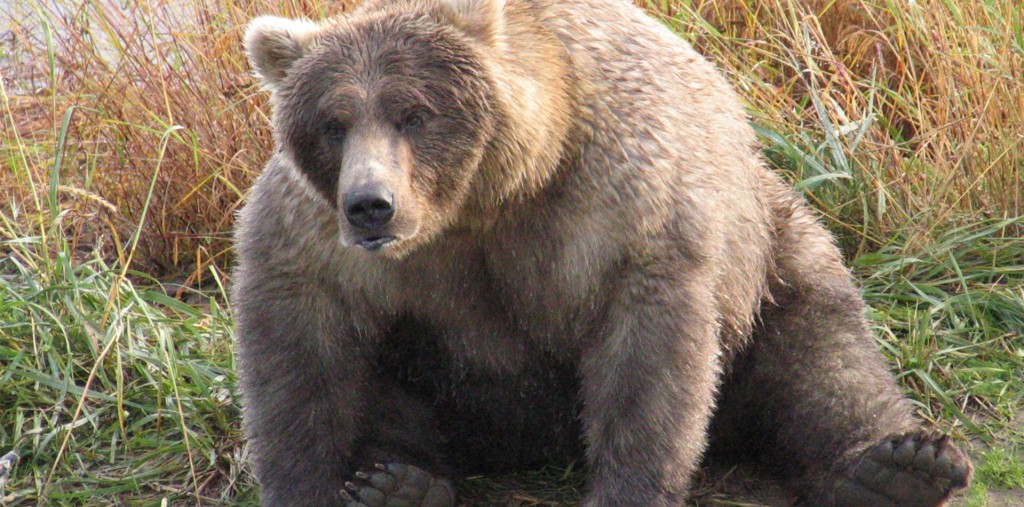By Mike Fitz
After nearly two summers with abundant salmon, Brooks River’s bears are very well fed. Their bellies hang low and their haunches jiggle when they walk. Even their necks have grown in circumference. And, with over a month remaining to feed on salmon, they will have even more opportunities to gain weight. The largest male brown bears in Katmai will weigh well over 1000 pounds when they finally settle into their dens. When you see bears whose stomachs appear to drag on the ground, one wonders if a bear can grow too fat for its own good.
For many land mammals, growing fat can be costly. Consider for a moment how obesity can hinder a mammal like a marmot or arctic ground squirrel. Similar to bears, these animals rely on stored body fat while hibernating, but as Bernd Heinrich explains in Winter World, “obesity makes the animal a considerably more attractive meal to predators, all the while compromising its speed and agility.” Even though brown bears are omnivores, they occupy an apex tier in their ecosystem. While many predators eagerly seek ground squirrels for food, bears aren’t typically preyed upon, except in rare instances when a bear kills and eats another bear.
Obesity doesn’t just make certain animals slower and perhaps more vulnerable to predators though. It could also compromise health. In humans, as well as domestic dogs, obesity greatly increases the risk for heart disease and diabetes. All of North America’s bear species—black, brown, and polar—become seasonally fat and many individual bears achieve a high level of obesity. One study on Alaska’s Kenai Peninsula found female brown bears average 30% body fat before entering their dens. Because they remain sedentary for half the year and eat a diet high in fat and sugar, we might expect bears, like us and our dogs, to have an increased risk of heart disease and diabetes. Remarkably though, bears do not suffer from either due to a physiology supremely adapted to their annual periods of feast and famine. Their pursuit of body fat doesn’t even interfere with other life tasks.
A bear’s urge to gain weight is strongest in late summer and fall when they enter a period of hyperphagia. During hyperphagia, a bear’s body temporarily suppresses the normal mechanisms that balance food intake with weight gain. The body says, “You aren’t full. You don’t have enough fat reserves and need to eat more.” In short, hyperphagic bears don’t feel sated. This need to gain weight before hibernation is extremely powerful for bears, but there are seasons when bears need to concentrate on other tasks besides getting fat. In late spring, when bears are quite hungry but not hyperphagic, they pursue a different urge. It’s their mating season. By decoupling the season of courtship and mating from the hyperphagia of late summer and fall bears can focus their efforts on two separate tasks and avoid an internal physiological conflict.
Fat is a bear’s primary fuel and source of hydration during winter hibernation, a time when they do not eat, drink, urinate, or defecate. It does not increase their risk of predation or disease, and the effort to gain weight doesn’t even interfere with their mating season. For brown bears ample body fat is a measure of success, necessary for their survival, and reflects an ecosystem’s health and abundance. So can a bear be too fat? Maybe, but only if it becomes so fat it can no longer walk.



